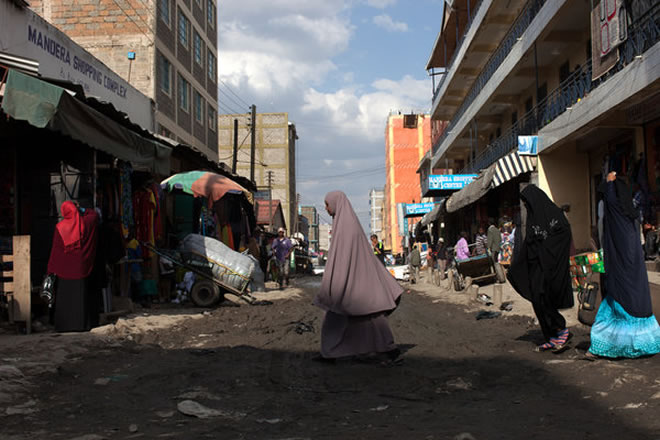
Tyler Hicks/The New York Times - Shabab Militants Draw Money From East Africa’s Underworld: The group has profited from Illicit ivory, kidnappings, piracy ransoms, smuggled charcoal, extorted payments from aid organizations and even fake charity drives.

By JEFFREY GETTLEMAN and NICHOLAS KULISH
Tuesday, October 01, 2013
NAIROBI, Kenya — Illicit ivory, kidnappings, piracy ransoms, smuggled charcoal, extorted payments from aid organizations and even fake charity drives pretending to collect money for the poor — the Shabab militant group has shifted from one illegal business to another, drawing money from East Africa’s underworld to finance attacks like the recent deadly siege at a Nairobi shopping mall.
Now officials here and in the West are redoubling efforts to defeat or at least contain the group — with a watchful eye on its hydra-headed sources of money — before its fighters can strike again in Kenya or even the United States.
For years, American officials have been deeply worried about the Somali militant Islamist group, which claimed responsibility for killing more than 60 men, women and children in the mall in the Sept. 21 attack. But despite comprehensive multiagency efforts to shut down its sources of money, the group still controls lucrative smuggling routes in southern Somalia, extracts protection money from Somali businesses and has raised hundreds of thousands, if not millions, of dollars abroad, part of it from the United States.
Somali elders say the Shabab employ a team of accountants — essentially white-collar militants — who have devised elaborate taxation schemes in Somalia, for instance $500 per farm per year or $2 for every sack of rice that passes through their checkpoints.
“They calculate your income, they do the math,” said Mohamed Aden, a former president of Himan and Heeb, a partially autonomous region of central Somalia near Shabab territory. “And then you have to obey. Otherwise, they kill you. That’s just how it is.”
In addition to its illicit financing activities, the group has proved adept at stealing from Islamic charities, like mosque-building projects and schools, according to several Somali elders.
But the Shabab are also known as savvy businessmen. After the group seized the port of Kismayo in southern Somalia, some car dealers as far as Mogadishu preferred importing vehicles there, instead of using the main government port, saying the Shabab ran a tighter operation with lower fees.
Though African Union forces have pushed the group out of Kismayo, its fighters still control the sandy hinterland around the port, and Somali elders say it continues to tax items like T-shirts, sugar and soap.
“They have a diversified income stream,” said Jonathan Schanzer, the vice president for research at the Foundation for Defense of Democracies and a former counterterrorism official at the United States Treasury. “Sort of a perfect cocktail that created this nightmare scenario.”
Somalia’s perennial chaos makes the Shabab’s tendrils even harder to remove. Militant groups around the world dabble in the felonious, but the long history of anarchy in Somalia, whose central government imploded in 1991, creates the ideal environment for war profiteers.
Shabab militants are able to extract extortion fees, kidnap Western aid workers along the Kenyan border, collude with Indian Ocean pirates and then retreat to their strongholds with no worries about being arrested or prosecuted because law enforcement is virtually nonexistent in Somalia.
The country’s extreme poverty is another complicating factor. When the United States designated the Shabab a terrorist organization in 2008, setting off sanctions on material support for the group, aid agencies complained bitterly that the American rules were making it impossible to distribute lifesaving aid in Shabab-controlled areas. The American government relaxed the enforcement of some of these rules in 2011, when a famine swept through southern Somalia, to ensure that assistance got to the millions of Somalis who needed it.
While the Shabab control far less territory than they did a few years ago, many people in this region remain terrified of their network of assassins and their continued ability to stage large-scale attacks on civilians, like the massacre in the Kenyan mall or a suicide bombing in Uganda in 2010 that killed scores of people. And as the Shabab transform themselves from a guerrilla movement that once aspired to rule Somalia and fielded a large army of young fighters (Shabab means “youth” in Arabic) to a leaner and more mobile terrorist organization, their costs will go down.
Mr. Schanzer said the attack on the Nairobi mall probably cost the group “close to $100,000,” calculating the price of the automatic rifles, bullets and grenades that were used, along with training costs and possibly rent for a store in the mall that investigators suspect may have been used as a weapon depot before the attack.
Source: The New York Times